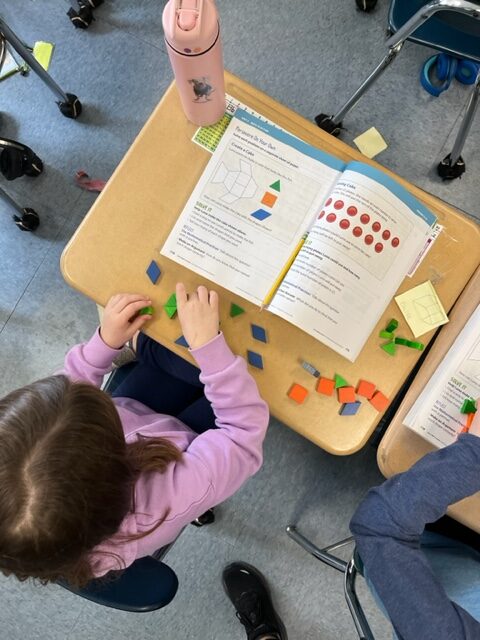Department of Instruction
The mission of the New Milford Public Schools, a collaborative partnership of students, educators, family, and community, is to prepare every student to compete and excel in an ever-changing world, embrace challenges with vigor, respect, and appreciation of the worth of every human being, and contribute to society by providing effective instruction and dynamic curriculum, offering a wide range of valuable experiences, and inspiring students to pursue their dreams and aspirations.
To support our students’ success after graduation, whether it be college or work beyond school, New Milford Public Schools are committed to providing students with rich opportunities from which students can apply skills and concepts in a real-world context. By doing so, we will be promoting our students’ ability to:
- Communicate clearly
- Think critically
- Creativity express their ideas
- Approach problems thoroughly and thoughtfully to find the answers and questions to deepen their thinking.
Creating a positive and safe environment is the foundation for this work. This occurs by helping students build positive relationships with adults and peers and learn strategies to make decisions, prioritize tasks, understand themselves as learners and approach new situations through a growth mindset – making mistakes and learning from them.

Department of Instruction Resources
Curriculum – District Web Page
Welcome to the New Milford Public Schools Department of Instruction.
The mission of the New Milford Public Schools, a collaborative partnership of
students, educators, family, and community, is to prepare every
student to compete and excel in an ever-changing world, embrace challenges with vigor, respect, and appreciation of the worth of every human being, and contribute to society by providing effective instruction and dynamic curriculum, offering a wide range of valuable experiences, and inspiring students to pursue their dreams and aspirations.
To support our students’ success after graduation, whether it be college or work beyond school, New Milford Public Schools are committed to providing students with rich opportunities from which students can apply skills and concepts in a real-world context. By doing so, we will be promoting our students’ ability to:
- Communicate clearly
- Think critically
- Creativity express their ideas
- Approach problems thoroughly and thoughtfully to find the answers and questions to deepen their thinking.
Creating a positive and safe environment is the foundation for this work. This occurs by helping students build positive relationships with adults and peers and learn strategies to make decisions, prioritize tasks, understand themselves as learners and approach new situations through a growth mindset – making mistakes and learning from them.
Report cards represent a crucial source of information for parents and how their children are doing in school, and the purpose of a standards based report card is to provide a comprehensive and transparent evaluation of a student’s academic progress as it aligns with established educational standards. This communication tool fosters a clear understanding of the student’s strengths and areas for growth in order to support learning and ongoing development.
“(The) report card needs to communicate three main points: 1. What students are expected to learn or be able to do, 2. how well students are doing those things, and 3. Whether that level of performance aligns with the learning expectations set for this grade level or course at that time in the school year.” (Guskey, 101)
New Milford Public Schools’ Vision and Goals for ALL Students
New Milford Public Schools envisions ALL members of its community will learn, grow, and build a passion and desire to be independent and highly-qualified citizens of our community.
The English Language Learner Department Goal:
100 percent of our English Language Learners will learn how to communicate and participate with their peers using the English Language, through, speaking, listening, understanding, reading, and writing.
Three Phases:
Newcomer: ELL students who have been in our country 10 months or less.
Phase One: ELL level one (beginner)
Phase Two: ELL level two (intermediate)
Phase Three: ELL level three (advance)
Multi-Tiered Systems of Support
Multi-tiered system of supports (MTSS) is a proactive and preventative framework that integrates data and instruction to maximize student achievement and support students social, emotional, and behavior needs from a strengths-based perspective. MTSS refers to the practice of providing effective instruction and intervention across three tiers. Assessment, progress monitoring, documentation and data-driven decision making are components of successful MTSS implementation.
Through the use of quantitative and qualitative data, classroom teachers, following a clearly defined process, may refer a child to receive additional support or intervention in mathematics or reading. This support includes targeted instruction and occurs in addition to the instruction the student receives from the classroom teacher.
The New Milford Public School Safe Climate Committee’s purpose is to ensure a safe school environment in which all members take the necessary actions needed to achieve positive academic, social, and emotional growth. Our schools are warm, welcoming destinations for students, families, and staff who are treated with respect and dignity.
The New Milford Public Schools District-Wide Safe School Climate Council aims to ensure students and faculty are provided with the safe environment needed to support teaching and learning. For this to occur, we must work collaboratively as a community.
The district committee will meet three times a year to review data and make recommendations to support school climate improvement. We will:
- Review and amend, as necessary, the District School Climate Plan;
- Review all school climate improvement plans;
- Review all district data and measurements of school climate;
- Make recommendations to the Superintendent regarding necessary changes to Board of Education Policy;
- Perform any other duties as determined by the School Climate Coordinator that is related to improving school climate (including, but not limited to the prevention, intervention, and response to school bullying for the district);
For more information: Safe School Climate Plan